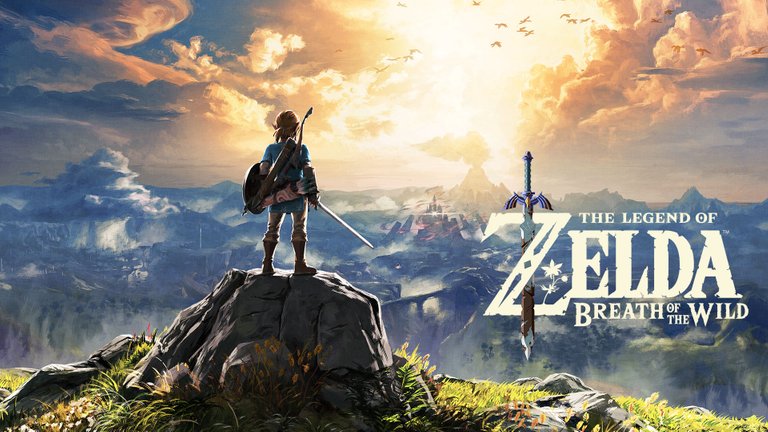
Legend has it that when Shigeru Miyamoto-san was a child, his view of the world was extremely creative and imaginative, just as he showed years later. At that distant time, in the far-off lands of Kyoto, Japan, the little boy would go out to explore the forests, meadows, and caves outside his home, while imagining that he was discovering a magical world, full of wonders. Decades later, his excitement and amazement at the unknown were transformed into The Legend of Zelda, the saga whose essence has transcended generations by letting each of us, like him, immerse ourselves in an epic, mysterious and surprising fantasy.
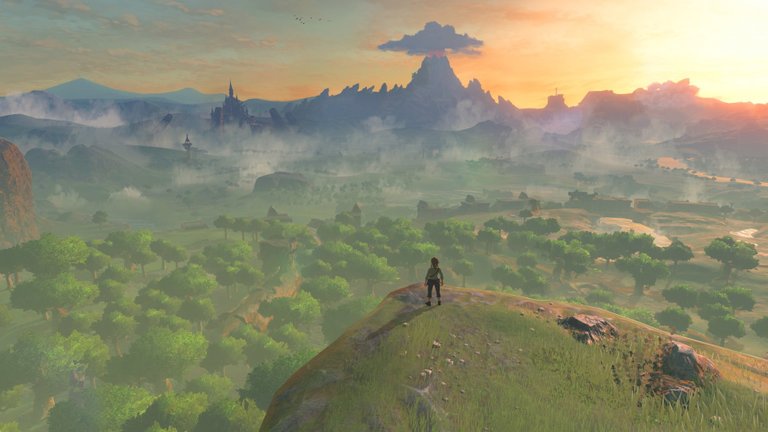
Giving me the time to nostalgically recall the origins of the franchise isn't just a fan's whim, it's fundamental to understanding the identity of Breath of the Wild and why Nintendo made so many decisions that, at first glance, seemed like a risky new direction for The Legend of Zelda. But above all, it's essential to understand the great potential the franchise has had since its inception. From the very first minutes you experience this new game, you can see the countless analogies that exist with the first NES game. Even though so much has changed since the 8-bit era, there is one element in which both the original and this latest game are extremely similar: giving us the freedom to explore almost every corner of Hyrule from the start, with minimal restrictions, without taking you by the hand, testing the limits of your ability and intellect at every turn, but above all challenging you from start to finish to try new things. It's an adventure into the unknown that will thrill and amaze you even after 30 or 50 hours of play.
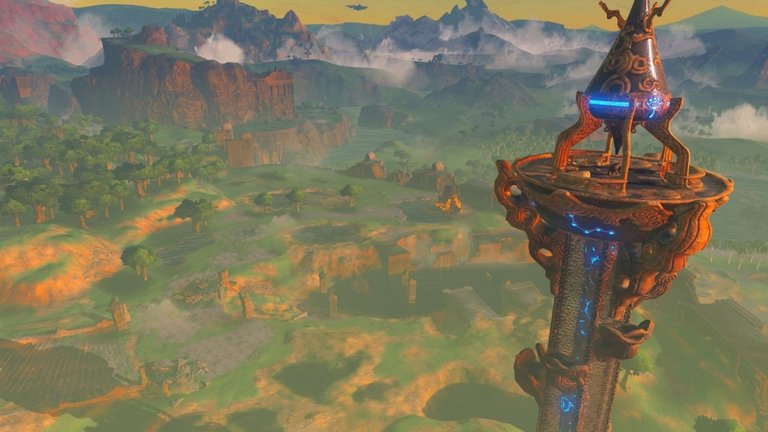
Breath of the Wild is without a doubt the most complete and complex game in the life of The Legend of Zelda, so much so that the open-world label is insufficient to describe its nature, for beyond the freedoms of exploration, the concept of the game is based on what you discover as you travel through every nook and cranny of the map and the myriad of things you can do. In fact, I would say that this post-apocalyptic version of Hyrule is the main character, while Link is simply the thread of the plot. Don't get me wrong, the hero is at the centre of the story at all times, but his relevance is diluted in the face of a vast and amazing world with a lot of personality; from towering mountains to vast grasslands or, on the other hand, labyrinthine gorges and intricate bodies of water, this is a more realistic and complex place than any we've been introduced to with previous Zeldas.
Added to this is the exploration itself, which I think is the heart of the game, because it's not simply the fact that you can get anywhere you see in the distance, no matter how far or how complicated it looks, but the challenge of finding out how to do it. And there are usually numerous ways. To get to the top of a mountain you can, for example, follow a path full of cliffs that you can cross only if you cut down trees to use as bridges, you can go through a series of caves with enemies, or you can risk walking along a frozen path where nature could annihilate you. There are countless situations similar to that and in many cases, they will lead you to find something meaningful. Specifically, there is an island that takes you time and effort to reach, but rewards you with an incredible surprise when you arrive.
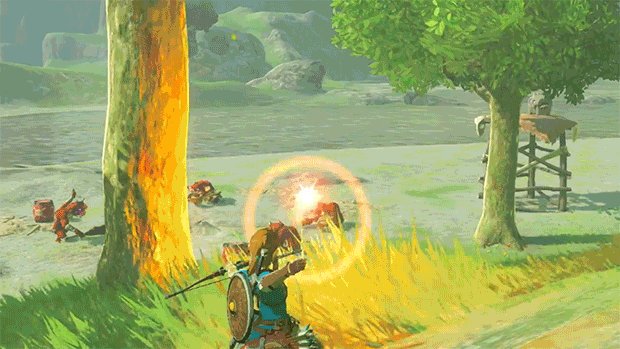
If we make comparisons with the standard of open worlds, some sections of Breath of the Wild may feel sterile, which undermines the value of continuous entertainment, although the perception may vary greatly from one person to another; while someone like me considers it a perfect balance between great ambience, good rhythm and touches of realism, I also understand that many people will be left with the feeling that something is missing, since the enemies are widely spaced and there is a lot of distance between one secret and another. Not to mention that there are very few "random" events, like finding villagers being chased by a lizalfo and waiting for you to rescue them; there are, but they are very occasional and could be considered more of a nod to the genre.

Each Zelda has elements of the genre, but this is the first time that all the requirements have been met. This open world is carefully made, with the same level of detail as the rest of the franchise. The first few hours are a cocktail of emotions: awe at the majesty, brief despair at not knowing where to go, satisfaction as we adapt to the strict rules of survival, fear that the freedoms of exploration would lead to a less polished gameplay experience, and in the end, peace of mind as we realise that while each person will experience something unique, everything in Breath of the Wild was carefully prepared to create specific reactions.
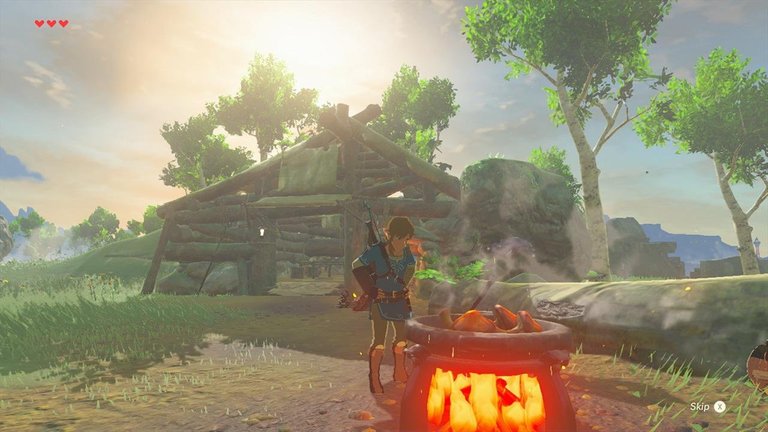
And even if the cartoonish, tender and playful elements of the whole Zelda are present, there is a maturity in the concept that breaks the standards, although not only of the franchise, but of the genre in terms of setting. Everything in the world has realistic touches: the animals react in a credible way to your actions and those of your enemies, the temperature of the environment can affect your performance or even annihilate you - for example, the freezing cold takes away your heart unless you find a way to raise your body heat -, there are certain physical efforts you can make only for a short time because Link is not an all-powerful being with unlimited stamina, in short, the execution of the world is great and flawless. Of course, it's not just about ambience, but about possibilities, because the interaction is deeper and to illustrate, food often gives you extra benefits when you cook it, so what happens when you set fire to an apple tree? You instantly get better snacks. When you throw a gun at an unarmed enemy and don't hit him, he may pick it up to attack you, or he may die suddenly from lightning if both of you are in a storm. Cases like these motivate you to experiment and test the rules of the world.
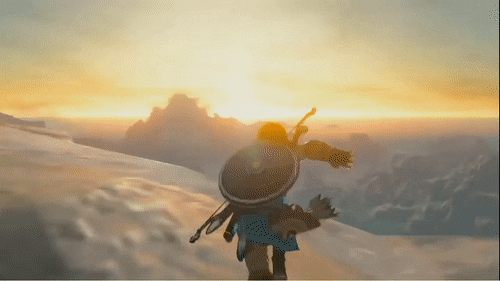
After talking a little about the generalities of the game, let's get down to the specifics. Being a sandbox, the structure of Breath of the Wild lets you decide the direction your adventure will take. There are no restrictions on which places you must visit first, and there are even rumors that you can take on Ganon almost from the start, as long as your skill and a lot of luck allow it. The possibility exists and there is no restrictive design that will take away the glory of finishing the game in a couple of hours, when it usually takes between 50 and 60 hours. However, as you travel around the world you have to look for two types of structure if you want to progress your character: some giant towers that besides being a strategic position for exploration let you see the fragment of the map in which they are located and, on the other hand, the sanctuaries.
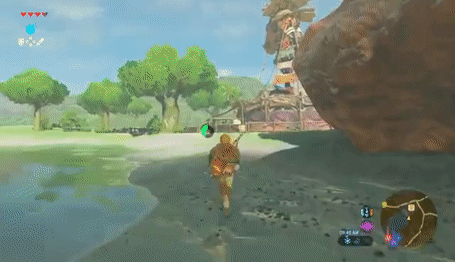
In Breath of the Wild the temples (say dungeons) are as gigantic and complex as in Majora's Mask or Wind Waker, but they exist in smaller numbers. In exchange for this "scarcity", the game offers an ultra-compact version, called sanctuaries, which consist of 2 or 3 rooms. Inside, you'll have to solve a couple of puzzles or defeat enemies, which are usually clever but not overly challenging. In my opinion there is a kind of indirect tribute to Portal, even in the aesthetics, colors and ingenuity behind these micro zones. But regardless of whether I'm just imagining the reference, it's a fact that the shrines are a great complement to the exploration, as there are hundreds of them scattered throughout Hyrule and the reward for defeating them is a pearl that serves as a coin to increase Link's abilities (the hearts and their resistance meter).
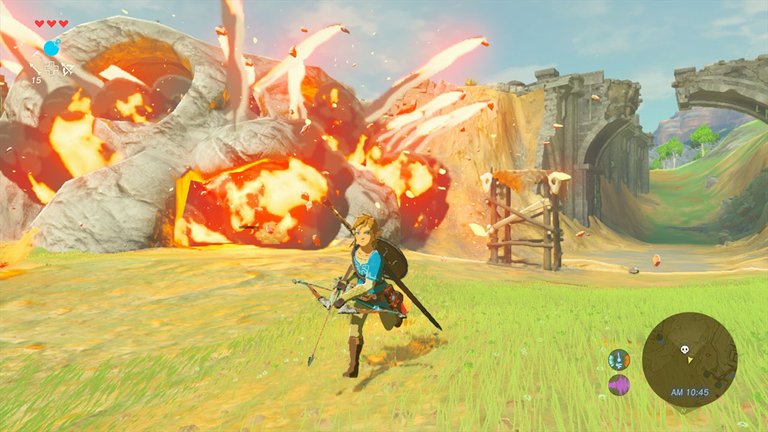
Luckily you're not conditioned to get an item to solve the puzzles, because you already have what it takes to start; from the beginning of the adventure you're given basic skills (two types of unlimited bombs, a magnetic beam with which you can move metal objects, the power to momentarily freeze certain things in motion and, finally, the ability to create pillars of ice on any water surface). You can use each to interact with the world while exploring in fun and clever ways, or even in combat. A key tactic when attacking large groups is to throw a bomb at them - it won't take as long to kill them all, as some have blast protection, but it will do general damage and baffle them for a few seconds, perfect for a surprise attack. That, in fact, coming suddenly into combat is one of the most rewarding aspects of the game, as there are many different ways, including the paravel, a kind of hang-glider that you can fly over after jumping from an elevated place and which is a fundamental tool in exploration; as you go down you can activate the bow, make a couple of slow motion shots and use the paravel again, to continue the descent and end up with a sudden attack against another enemy.
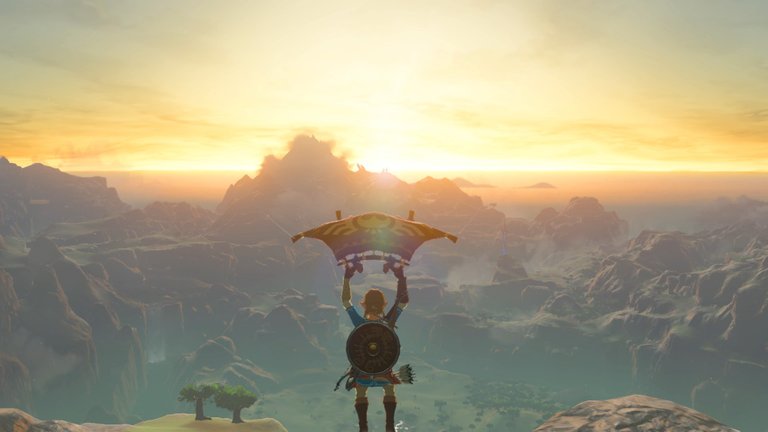
Now, just as we said, the weapon and item layout in Breath of the Wild is different from previous Zelda titles. Here, everything in your inventory has either limited durability or a limited number of uses. That means that every sword, axe, spear, shield, and other equipment you find will eventually break after a few fights. There are even times when you have to replace your weapon in the middle of a battle, especially if you're fighting many enemies at once. This isn't synonymous with scarcity or unnecessary complications; on the contrary, it's a highly polished and addictive component of the game. As you find weapons at all times, your inventory will constantly fill up to the point that you'll be designing your strategy based on the types of weapons in your arsenal. If you like fast moves and dexterity techniques, you'll end up favoring short swords in combination with a shield, but if you prefer high-impact hits, you'll probably go for a two-handed sword, a lance for ranged attacks, or a powerful war hammer. Regardless of your choice, however, Breath of the Wild offers a great deal of flexibility in terms of combat, so you can choose the style that suits you best. Speaking of space for your weaponry, you can expand it if you meet the requirements: find some small creatures called kolog, which are hidden all over Hyrule, and then take the seeds they give you with a character who exchanges them for more space for your inventory.
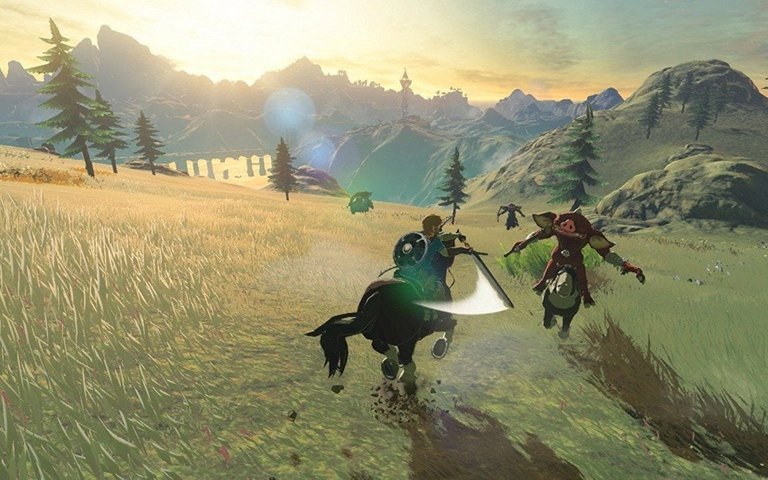
The important thing is that combat in Breath of the Wild is very challenging and therefore extremely rewarding. The gameplay is very good, as much as in previous Zelda titles, but elements have been added to help you manage the wide variety of items. From the start you have a shortcut to instantly change powers, weapons, shields and bow types. Switching between them is also important because there are specific situations where some will serve you better than others. For example, there are a variety of arrows (fire, ice, etc.) that will serve you to attack enemies vulnerable to that type, or on the other hand, there are shields that provide better protection against certain types of attack. In addition, mobility is key: dodging, blocking, jumping, counter-attacking and constantly changing targets will help you to be victorious in the most difficult battles or, if you don't do it correctly, to have to try again and again until you win. This new instalment of Zelda respects your intellect, but asks you to return the favour in return, so you'll often find yourself in situations that seemed predictable and easy to solve, only to end up with certain death because you were confident. Even when you're already heavily equipped, the game puts you in challenging conditions that will test your ability.
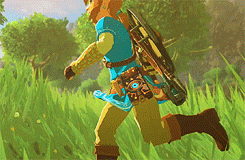
On the other hand, there is a huge amount of ingredients and materials that you can collect. One of the cornerstones of the game experience is making use of these items to improve your performance in exploration, combat and survival. Food, for example, is useful for recovering hearts when you use it in its natural state, but if you cook it it has a greater effect or can give you special benefits. If you combine some electrified mushrooms with the meat of some animal, the result is an elixir that protects you against electrical attacks. There are an infinite number of variations that, once again, seduce you to experiment to create increasingly exotic combinations, although there is a point at which overly complex mixtures can create a disastrous and unusable potion.

Of course, a Zelda with no plot value is not a good Zelda. Breath of the Wild adheres to the rule by offering a simple narrative at times, but very emotional, mysterious and exciting. The Link we know in this mythology is the hero of prophecy, but he is not infallible and as the plot progresses you realize that he, along with the rest of the characters, are very human, with flaws and shortcomings, which are individuals with genuine doubts about their destiny. Although I won't give more details about the plot, to avoid spoilers, I can say that the plot is among the best in the whole franchise and that no matter if you're a fan or not, there will be moments when it will move you.
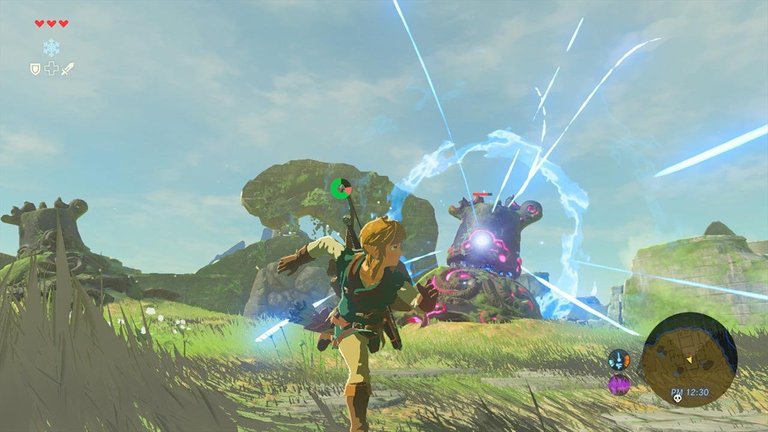
As far as the technical side is concerned, Breath of the Wild clears up any doubts about the capabilities of the Nintendo Switch, as it's beautiful, full of visual details and generally performs exceptionally well. The aesthetics of the game are striking, the scenery leaves you amazed with its great extension, especially if you see it from a very high place, the villages are full of life and small details, to the point that they seem to be real, the characters transmit their emotions well enough, in short, wherever you turn you can feel an enveloping atmosphere, driven by an excellent balance between well executed graphics, ambient sounds that immerse you in a place that seems genuine and occasional music that appears only at key moments.
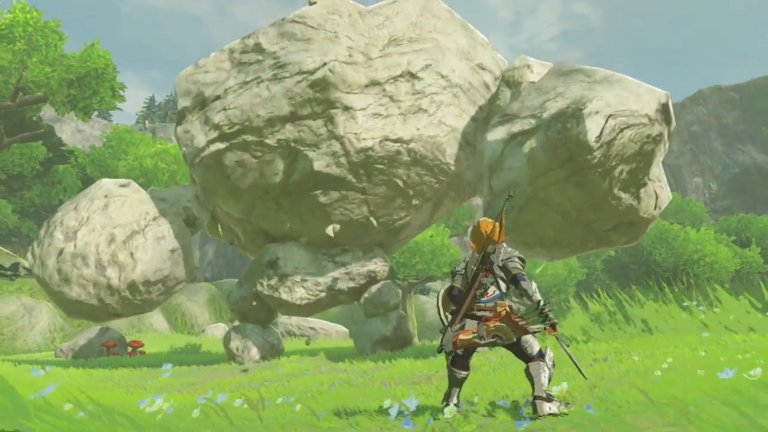
The Legend of Zelda: Breath of the Wild is a wonderful game. Every aspect of the gameplay experience is well executed in technical terms, but beyond that, it awakens you to intense emotions of curiosity and anguish, to constant amazement... each in a positive light, adding up to envelop you and captivate you. This franchise release is by far one of the best works in Nintendo's history, one whose quality will resonate for a long time to come. I think not all fans of the genre will be pleased, more because of certain conventions that Nintendo is used to, than because of the quality of the mechanics, the atmosphere or the element of exploration. I can't say it's perfect by the standards that are used to qualify in the industry, but it's perfect from a very personal perspective.
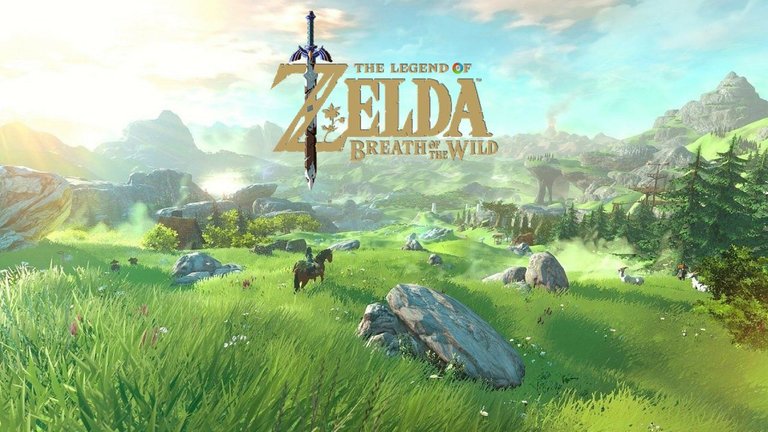
Source
Direct translation without giving credit to the original author is Plagiarism.
Repeated plagiarism is considered fraud. Fraud is discouraged by the community and may result in the account being Blacklisted.
If you believe this comment is in error, please contact us in #appeals in Discord.
Please note that direct translations including attribution or source with no original content is considered spam.
I never did finish Ocarina of TIme on the Gamecube promo disc! It's a shame this game will probably never come to PC. Nice review!
I could never complete Ocarina of Time on the Nintendo 64, this week I will download an emulator and fulfill that dream. Thanks for your comment and I hope you enjoyed the review
Congratulations @triangulum! You have completed the following achievement on the Hive blockchain and have been rewarded with new badge(s) :
You can view your badges on your board And compare to others on the Ranking
If you no longer want to receive notifications, reply to this comment with the word
STOPTo support your work, I also upvoted your post!
Do not miss the last post from @hivebuzz: